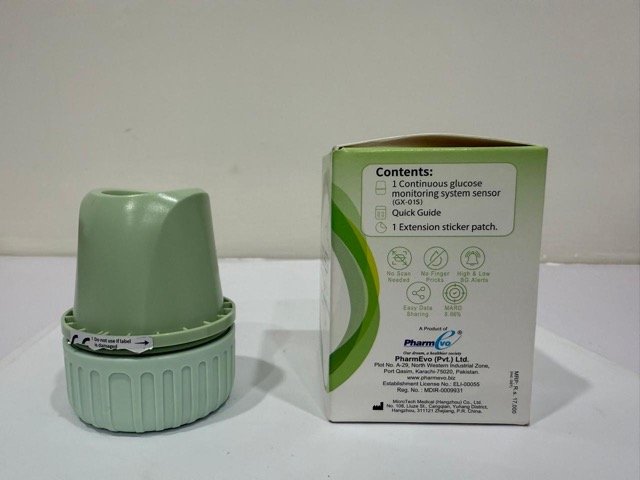Almotriptan is a medication primarily used for the treatment of migraine headaches. It belongs to a class of drugs called triptans, which work by narrowing blood vessels in the brain to reduce pain and other migraine symptoms. Almotriptan is commonly available in tablet form and is typically taken at the onset of a migraine attack. It's important to note that this medication is not used for the prevention of migraines or for the treatment of headaches other than migraines.
Almotriptan is a selective agonist of serotonin receptors in the brain. It is used in the acute management of migraine with or without aura in adults and adolescents. It should be avoided in patients with ischemic heart disease, uncontrolled hypertension, peripheral arterial disease, and cerebrovascular diseases.
Almotriptan Dose in Adults
Almotriptan dose in the treatment of migraine:
- The usual dose is between 6.25 to 12.5 milligrams (mg) taken by mouth as a single dose when the migraine starts.
- If the headache comes back, you can take another dose after 2 hours, but don't take more than 2 doses in one day. The maximum amount you should take in one day is 25 mg.
- Be cautious if you're treating more than 4 migraines a month, as it's not clear if it's safe to use almotriptan more frequently.
If you're taking other medications that affect enzymes in your body:
- If you're taking a strong inhibitor of an enzyme called CYP3A4, your starting dose of almotriptan should be 6.25 mg as a single dose, and don't take more than 12.5 mg in one day.
- If you have kidney problems and you're also taking a strong inhibitor of CYP3A4, it's best to avoid using almotriptan.
- Similarly, if you have liver problems and you're taking a strong inhibitor of CYP3A4, it's best to avoid using almotriptan.
Almotriptan Dose in Children
Almotriptan dose in the treatment of migraine:
For children aged 12 years and older and adolescents:
- Start with 6.25 to 12.5 mg as a single dose by mouth when the migraine begins.
- If the headache comes back, you can take another dose after 2 hours, but don't take more than 2 doses in one day.
- The most you should take in a day is 25 mg.
- Be careful if you're treating more than 4 migraines a month because it's not clear if it's safe to use almotriptan more often.
- If Taking Other Medications:
- If you're also taking a strong inhibitor of an enzyme called CYP3A4, start with 6.25 mg as a single dose, and don't take more than 12.5 mg in one day.
- If you have kidney or liver problems and you're taking a strong inhibitor of CYP3A4, it's best to avoid using almotriptan.
Pregnancy Risk Factor C
- Almotriptan has a Pregnancy Risk Factor C, meaning there's some evidence of adverse effects in animal studies, but data on its use during pregnancy in humans is limited.
- Experts recommend opting for other medications for treating migraines during pregnancy until more information becomes available.
Almotriptan use during breastfeeding:
- It's uncertain whether almotriptan passes into breast milk.
- The manufacturer advises caution when giving almotriptan to nursing mothers.
Almotriptan Dose in Renal Disease:
- For individuals with severe renal impairment (when the creatinine clearance is 30 mL/minute or less), the initial dose of almotriptan is 6.25 mg taken as a single dose. The maximum amount you should take in one day is 12.5 mg.
Almotriptan Dose in Liver Disease:
- For individuals with hepatic impairment (problems with the liver), the initial dose of almotriptan is 6.25 mg taken as a single dose. The maximum amount you should take in one day is 12.5 mg.
Common Side Effects to almotriptan:
- Central nervous system:
- Drowsiness and dizziness
- Gastrointestinal:
- Nausea, vomiting, and xerostomia.
- Neuromuscular & skeletal:
- Paresthesia
Rare side effects include:
Anaphylaxis, abdominal pain & cramps, angina, chest pain & myocardial infarction, blurred vision & dry eyes, dyspepsia, fatigue, fever, gastritis, GERD, hypercholesterolemia, hypertension, insomnia, tachycardia, syncope, and cardiac arrhythmias.
Contraindications to almotriptan:
- Almotriptan should not be used if you have a known allergy to almotriptan or any of its components, or if you've had hemiplegic or basilar migraines.
- It's also not suitable if you have or are suspected to have certain heart conditions like angina or heart attacks, or if you've had strokes or transient ischemic attacks.
- Individuals with conditions like peripheral vascular disease or uncontrolled high blood pressure should avoid it too.
- Additionally, don't use almotriptan within 24 hours of taking other medications that work like it, or within 24 hours of using drugs containing ergotamine, as it could lead to serious complications.
Warnings and Precautions
Cardiac events:
- Serious cardiac events like coronary artery spasms, transient ischemia, heart attacks, rapid heart rhythms (ventricular tachycardia/fibrillation), cardiac arrest, and even death have been reported with the use of drugs that work like almotriptan.
- If you feel chest pain, pressure, or tightness, or experience symptoms that could indicate heart problems after taking almotriptan, it's essential to see a doctor.
- They may need to check if you have coronary artery disease or a type of angina called Prinzmetal's angina before considering more doses.
- If you restart almotriptan and similar symptoms occur again, your doctor may suggest monitoring your heart with an electrocardiogram (ECG) to ensure your safety.
Cerebrovascular events:
- Cerebrovascular events such as bleeding in the brain (cerebral or subarachnoid hemorrhage) and strokes have been reported with the use of medications like almotriptan.
- If you're taking almotriptan and experience symptoms like sudden severe headaches, vision changes, confusion, trouble speaking or understanding, weakness or numbness in one side of the body, or difficulty walking, seek medical help immediately.
- These could be signs of a serious cerebrovascular event, and prompt evaluation is crucial for your health and safety.
Elevated blood pressure:
- Rarely, significant increases in blood pressure, including hypertensive crises, have been reported after taking medications like almotriptan, especially in people with or without a history of high blood pressure.
- If you have concerns about your blood pressure or experience symptoms like severe headaches, chest pain, vision changes, shortness of breath, or confusion after taking almotriptan, it's crucial to seek medical attention promptly.
Headaches
- Using acute migraine treatments like triptans, opioids, ergotamine, or a mix of these medicines for 10 or more days each month can sometimes make headaches worse, a condition known as medication overuse headache.
- If you find yourself using these treatments frequently and your headaches are getting worse, you may need withdrawal treatment.
Ocular effects
- Rarely, the use of medications like almotriptan, which are serotonin (5-HT) agonists, has been associated with ocular (related to the eyes) effects, including temporary or permanent blindness and partial loss of vision.
- If you experience sudden vision changes, such as blindness or vision loss, after taking almotriptan, seek immediate medical attention.
Allergy to sulfonamide
- Almotriptan contains a sulfonyl group, which is chemically distinct from sulfonamides.
- While cross-reactivity in individuals with sulfonamide allergies hasn't been fully studied, caution is advised for people in this group when using almotriptan.
Vasospasm-related events:
- There have been reports of peripheral vascular ischemia (reduced blood flow to the limbs) and colonic ischemia (reduced blood flow to the colon) associated with the use of medications like almotriptan, which are serotonin (5-HT) agonists.
- If you experience symptoms such as sudden severe pain, numbness, tingling, or color changes in your limbs, or abdominal pain with bloody diarrhea after taking almotriptan, seek medical attention promptly.
- These could be signs of serious vascular problems, and immediate evaluation is crucial for appropriate management.
Coronary artery disease:
- Almotriptan should not be used in patients with known coronary artery disease (CAD), which includes both ischemic and vasospastic forms.
- Individuals with risk factors for CAD, such as high blood pressure, high cholesterol, smoking, obesity, diabetes, a strong family history of CAD, menopause, or men over 40 years old, should undergo a thorough cardiac evaluation before starting almotriptan.
- If the cardiac evaluation results are satisfactory, the first dose should be given in a healthcare provider's office, with consideration for electrocardiogram (ECG) monitoring.
- All patients should receive regular check-ups to monitor their cardiovascular health during almotriptan treatment.
Hepatic impairment:
- In individuals with liver problems, caution is advised when using almotriptan.
- Liver impairment can slow down the clearance of the drug from the body, potentially leading to higher levels of almotriptan in the blood.
- To mitigate this risk, a dosage reduction is recommended for patients with hepatic impairment.
Renal impairment:
- Patients with moderate-to-severe kidney failure should use almotriptan cautiously.
- In these individuals, the clearance of the drug from the body may be slowed down, resulting in higher levels of almotriptan in the blood.
Serotonin syndrome
- Serotonin syndrome, a serious condition, may arise when almotriptan is used alongside other medications that boost serotonin levels in the brain, such as SSRIs, SNRIs, or other triptans.
- Symptoms can include agitation, confusion, hallucinations, muscle twitches, shaking, and rapid heartbeat.
- It's not recommended to use almotriptan alongside serotonin precursors like tryptophan.
- If it's necessary to take SSRIs alongside almotriptan, close monitoring, particularly at the beginning and when adjusting doses, is crucial to watch for any signs of serotonin syndrome.
Almotriptan: Drug Interaction
Note: Drug Interaction Categories:
- Risk Factor C: Monitor When Using Combination
- Risk Factor D: Consider Treatment Modification
- Risk Factor X: Avoid Concomitant Use
|
Risk Factor C (Monitor therapy). |
|
|
Antiemetics (5HT3 Antagonists) |
This may increase the serotonergic effects of Serotonin Activators. This could lead to serotonin syndrome. |
|
Antipsychotic Agents |
Antipsychotic Agents may have a greater adverse/toxic effect if they are regulated with serotonin modulators. Serotonin modulators can increase dopamine blockade and, therefore, may increase the risk of developing the neuroleptic malignant syndrome. Serotonin modulators may have a serotonergic effect that is enhanced by antipsychotic agents. This could lead to serotonin syndrome. |
|
Droxidopa |
Droxidopa's hypertensive effects may be enhanced by Serotonin 5-HT1D Receptor Agonists. |
|
This may increase the serotonergic effects of Serotonin Activators. This could lead to serotonin syndrome. |
|
|
Can increase the toxic/adverse effects of Serotonin modulators. In particular, there may be an increase in the risk of serotonin syndrome and serotonin toxicities. |
|
|
The adverse/toxic effects of Metoclopramide may be exacerbated by Serotonin Modulators. This could manifest as serotonin syndrome, neuroleptic malignant syndrome, or other symptoms. |
|
|
Opioid Agonists |
This may increase the serotonergic effects of Serotonin Activators. This could lead to serotonin syndrome. |
|
Serotonin Modulators |
This may increase the toxic/adverse effects of other Serotonin Activators. Serotonin syndrome can develop. Exceptions: Nicergoline; Tedizolid. |
|
The adverse/toxic effects of TraMADol may be exacerbated by Serotonin Modulators. Seizures may increase. TraMADol could increase the serotonergic effects of Serotonin Activators. This could lead to serotonin syndrome. |
|
|
Risk Factor D (Consider therapy modifications) |
|
|
Strong CYP3A4 inhibitors |
May increase the serum concentration of Almotriptan. Use strong CYP3A4 inhibitors to limit almotriptan's initial adult dose to 6.25mg and to 12.5mg/24-hour for the maximum dose. Patients with impaired renal or hepatic function should not be given concurrently. |
|
Risk Factor X (Avoid Combination) |
|
|
Dapoxetine |
Can increase the toxic/adverse effects of Serotonin Activators. |
|
Ergot Derivatives |
The vasoconstricting effects of Ergot Derivatives could be enhanced by Serotonin 5-HT1D Receptor Agonists. Nicergoline is an exception. May increase the vasoconstricting effects of Serotonin 5-HT1D Receptor Agonists. |
|
Methylene Blue |
This may increase the serotonergic effects of Serotonin Activators. This could lead to serotonin syndrome. |
|
Monoamine Oxidase Inhibitors |
May reduce the metabolism of Serotonin 5-HT1D Receptor Agonists. Management: Freovatriptan, Eletriptan and Naratriptan are suitable 5-HT1D agonists to use if MAO inhibitor therapy must be used. |
|
The adverse/toxic effects of SUMAtriptan may be exacerbated by 5-HT1D Receptor Agonists. |
|
Monitoring Parameters:
- Monitor the patient for symptoms of ischemic heart disease and periodically with ECG and stress testing.
- Baseline ECG, Liver and renal function tests should be performed routinely in all patients started on almotriptan therapy.
- The first dose, in high-risk patients (for IHD), should be given at a place where a medical facility is available.
How to Administer Almotriptan?
- You can take almotriptan regardless of meals.
- Whether you've eaten or not doesn't affect how well the medication works, so you can administer it with or without food.
Mechanism of action Almotriptan:
- Almotriptan is a selective agonist for serotonin (specifically, 5-HT1B and 5-HT1D receptors) in the cranial arteries.
- By acting on these receptors, it triggers vasoconstriction (narrowing of blood vessels) and decreases sterile inflammation linked with antidromic neuronal transmission.
- This mechanism is thought to contribute to the relief of migraine symptoms.
Absorption:
- Almotriptan is well absorbed by the body.
Distribution:
- It has a volume of distribution (V) of around 180 to 200 liters.
Protein Binding:
- Approximately 35% of almotriptan binds to proteins in the blood.
Metabolism:
- It undergoes metabolism mainly through MAO type A oxidative deamination (about 27% of the dose) and by enzymes CYP3A4 and 2D6 (around 12% of the dose) to form inactive metabolites.
Bioavailability:
- The bioavailability of almotriptan is approximately 70%.
Half-life Elimination:
- The average half-life elimination of almotriptan is between 3 to 5 hours.
Time to Peak, Plasma:
- It reaches peak levels in the blood around 1 to 3 hours after administration.
Excretion:
- Almotriptan is primarily excreted through urine (about 75%, with approximately 40% of the total dose being unchanged drug) and to a lesser extent through feces (around 13% of the total dose, as unchanged drug and metabolites).
International Brands of Almotriptan:
- Almogran
- Almoptan
- Almozen
- APO-Almotriptan
- Axert
- Altrip
- Magriban
- Seratova
- Triptagrain
- MYLAN-Almotriptan
- SANDOZ Almotriptan
- TEVA-Almotriptan
Almotriptan Brands in Pakistan:
No Brands available in Pakistan
How to treat moderate to severe acne? Read







